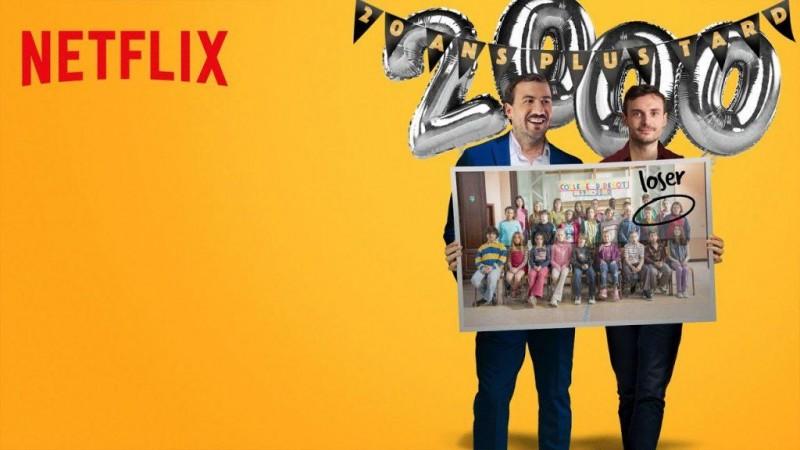It takes a special kind of effort to be a homophobic, racist, classist, elitist film yet visually politically correct simultaneously. The French Netflix film Back To School begins with a moment of fat-shaming by a bunch of brainless jocks. Director Remy Four and Julien War along with writer Florian Assous keep us in touch with the general nature of a white teenage film with a French twist.

There are two Jonathans in Back To School. Jonathan Lopez, the abusive bully who is considered to be cool for cussing the fat-kid, and Jonathan Picket, the fat boy who got bullied by the Lopez and his friends. Years later, Jonathan P and his best friend Pierre have turned into the handsome intelligent men, who drive the Mercedes. But Pierre is not satisfied. Despite being in the age of social media, he wants to flaunt his richness, good-looks to those who once bullied him in school. He wants to feel that pleasure of looking them in the eye and be rest assured that none of them is doing well.
The reunion
When the high school reunion happens everyone mistakes Jonathan P to be Lopez for almost the rest of the film. The former girlfriend Linda starts having the most romantic moments with him while Jonathan P only fulfills his fantasy to being kissed by the most popular girl in school. He gets a brutal reality check when she comes to know the truth about his identity.
Homophobia was once considered cool, but this is 2020, and we cannot do that anymore. So when Pierre comes to know that two of those who bullied him were actually gay themselves, he just wants to expose them in a dirty fashion, but he is secretly aware that he is among people who condemn homophobia. Years of being a nerd finally paid off, when he came up with a politically correct, sexually pleasing idea of creating a graffiti about the two bullies enjoying an intense moment with each other. (An important point which I mentioned earlier, the ability to be homophobic, yet politically correct.)
The writers brilliantly sequence the events to make their point visually clear about the ones who crack racist jokes. When Jonathan P meets an old cab-driver who works as a cab-driver, the latter begins to flaunt about how they went to India and learned about 'poverty'. A part of eagerly wished to smash the white supremacist, but the point remains subtle when the writers build a portrayal of the character who works as a cab-driver and makes a random comment about India.

















